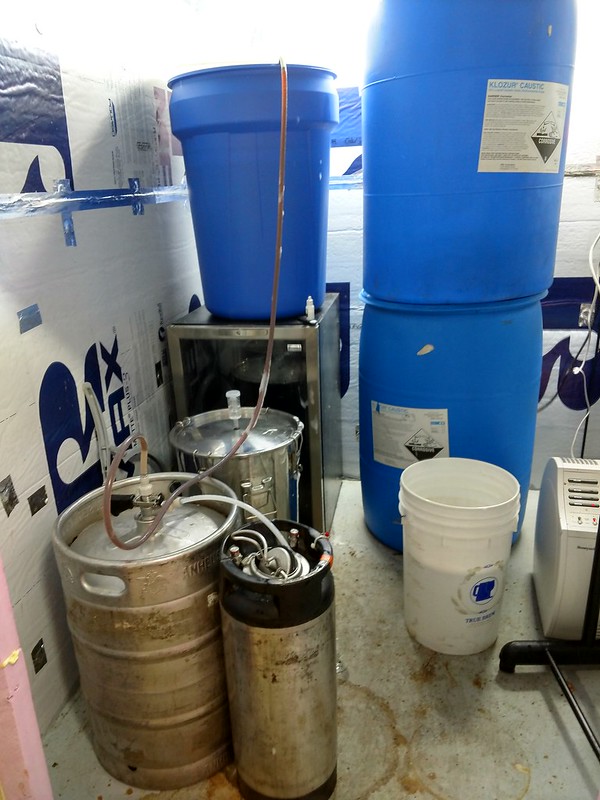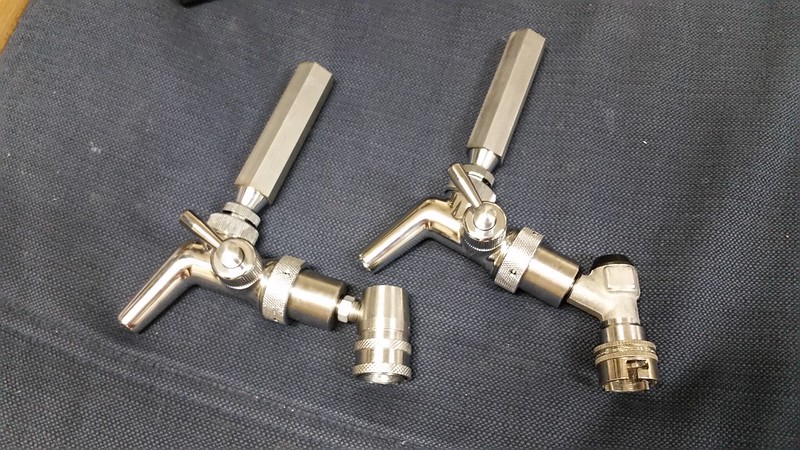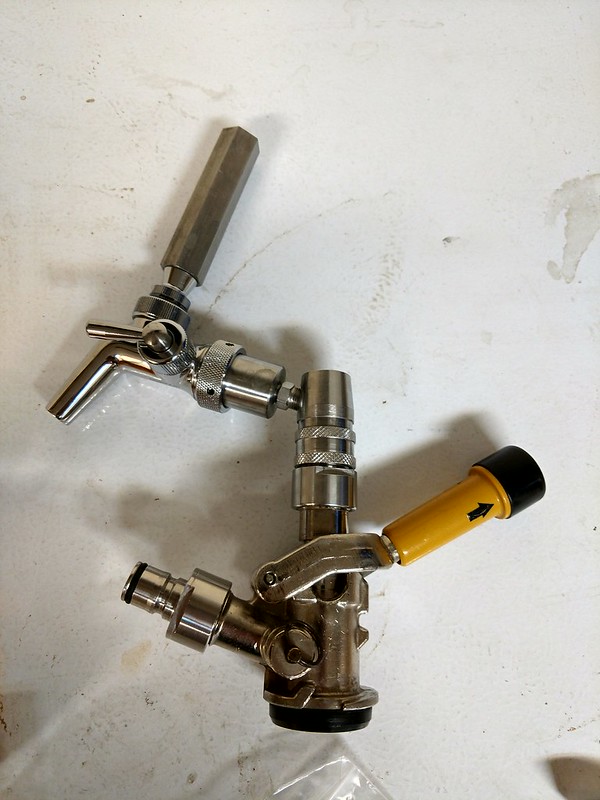:smack:
I'm not quite sure of the constructive nature of your post.

:smack:
Ah! I wasn't clear. I carbonate my kegs before putting them in the walk-in, so once they are in there, they are ready to be tapped and are fully pressured. As I drink from the kegs though, the pressure in the kegs will drop, so I periodically go into the walk-in, and go around to all the kegs, and repressurize them one by one. That is why I only need a single ball lock and pin lock gas connector in the walk-in.
Also, I have two 50# CO2 tanks (along with five 20# tanks), one of which is used for the walk-in. It is right next to the coffin box, and chained to the side of the walk-in. I use a bulkhead at the coffin box to bring the CO2 line in. I will be converting all of those connectors to John Guest fittings, and also using the Bev Seal Ultra line as a CO2 line to replace my current PVC gas lines.
I posted this in another forum, but I have received some questions about it here, so I decided to post the information.
I wanted to share the evolution of how I work with my kegging equipment.
I've always used flared connectors because I've always bought the cheapest kegs I could find, and I like being able to take apart my equipment.
I used to use worm-drive clamps, but those cut my fingers on a regular basis, and did not seal the gas lines very well. Most of my gas line is still 1/4 ID x 3/8 OD tubing, which is what the homebrew shops sell, and what I assume most of us use for our gas line.
Then I moved to oetiker clamps, which are by far superior to the worm drive clamps at sealing but are a huge pain when trying to remove - I still use oetiker clamps when I need a clamp though, and I still have bags of clamps because I always buy more than I need.
I always used 3/16 ID x 7/16 OD tubing for my beerline because that is what is sold everywhere and marketed for beerline, and it seems to have a pretty standard pressure drop that people use with their calculations.
I like to keep spares on hand for everything, which meant that for both types of tubing, I had at least 100 ft, in some cases 200 ft of spare tubing. I also had to keep those stainless barb nut fittings for new lines of tubing. I don't even know how many of those barb nut fittings I have at this point, well over 100 though.
I never liked having two different types of tubing to deal with, and I did not like having to use the barb nut fittings. I began looking at options that were available, mostly through US Plastics.
I found these acetal john guest fittings: http://www.usplastic...74538&catid=832 along with some that had 1/4 MPT with 3/8 tubing fittings, and I also found 3/16 ID x 3/8 OD poly tubing from US plastics that could fit and seal with the acetal fittings.
I know I've invested a lot in the older tubing and barb nut fittings so far, but I have been gradually using these new John Guest fittings along with the new tubing for the new beer lines I've been installing in the walk-in cooler, and so far for the past few months, I've had no leaks, and they work well.
In the long term, this will be much more convenient for me, as I am gradually going to transition to all one type of tubing and all John Guest fittings. This will actually reduce the number of connectors I have from before - I used to install the barb nut fittings on all tubing, even on pieces I wasn't using at the moment, or for spares. With these John Guest fittings, they only go on the quick disconnects, and I can adjust tubing or change it easier by popping it out, cutting it, or replacing it, then pushing it back in to seal.
The only leftover part is the check valve for the gas line. I use the polypropylene check valves from US Plastics, and for those I still plan on using oetiker clamps, but I don't see an affordable way around this. I looked into the 3/8'' John Guest check valves and they were too expensive for me to put on all my gas lines. It would've been awesome if they were cheaper, but they aren't, so they aren't a viable alternative for me.
I also could not find a long enough John Guest bulkhead to pass through the coffin box, but I may just need to look beyond US Plastics for that piece. I think I've found one, and it is on order.
That was extremely long-winded, but I wanted to share my experience and what I've learned so far from the past 6 years of kegging and working with an ever increasing number of kegs and the frustrations that go along with that - I am at over 100 kegs now, and if any of you have been following the walk-in cooler thread, I now have 14 faucets flowing. I also still have a chest freezer with kegs in it too, along with numerous CO2 tanks and regulators - all of which I intend on gradually transitioning over to these fittings and the new tubing.
Here is a follow up post as well with some pictures:
Here is one regulator that I've converted over:

Here is the manifold that I have retrofitted with new valves and the fittings


Here are what the disconnects look like - they are the standard flared disconnects with the John Guest fittings on them:

Right now I am doing a leak test on everything that I've retrofitted (two set of regulators, and the one manifold). I need to be careful to make sure I don't create new leaks. Depending on how well these two sets go, I may try to retrofit the regulator for the walk-in, along with the manifold. If I can retrofit everything and make it leak-free (right now it has a big leak), then I may feel comfortable leaving the gas on the kegs in the walk-in cooler. Plus with these fittings, it is relatively easy to add in a Tee, or put in another manifold.
Once I've leak tested the manifold itself, I will make the gas lines, and put in the check valves, then do another leak test with the disconnects. I try to do my tests over a 24 hour period to make sure there aren't any leaks, and I only like to do one segment at a time, so it takes me a while to do a leak test.
I have also just ordered another bulkhead, hopefully it will be long enough to go through the plywood side of the coffin box. I'd like to get both my CO2 as well as my beergas to go through the coffin box and into the walk-in cooler through the use of the push-to-connect fittings if possible.
I have to be careful of cost though - I have so many disconnects, regulators, and manifolds (plus three jockey boxes and two randalls), that to retrofit everything at once is pretty expensive, so I will be trying to do this gradually. The next order may only be for 25 pieces, and I may need more than double that still at this point. Plus as I change out the fittings, I will also need to buy more tubing to match these fittings, and I may need another 200-300 ft of line, along with more check valves.
Whew. So far it seems to be worth it for me though, and hopefully I can retrofit the rest of my equipment within half a year or so.


![Craft A Brew - Safale S-04 Dry Yeast - Fermentis - English Ale Dry Yeast - For English and American Ales and Hard Apple Ciders - Ingredients for Home Brewing - Beer Making Supplies - [1 Pack]](https://m.media-amazon.com/images/I/41fVGNh6JfL._SL500_.jpg)









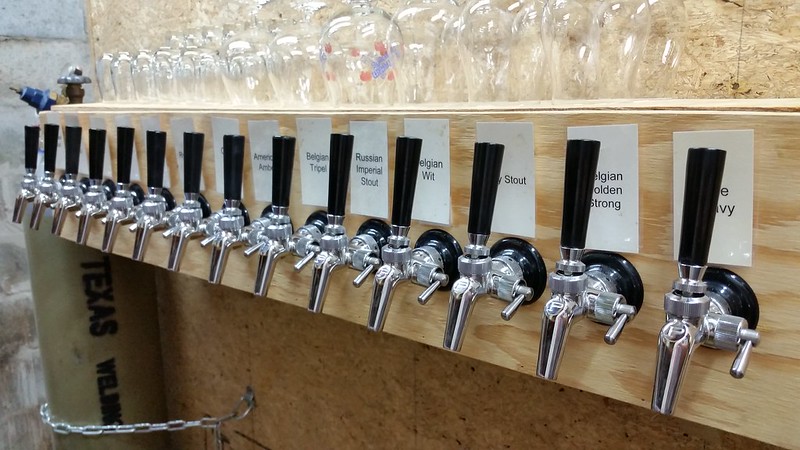
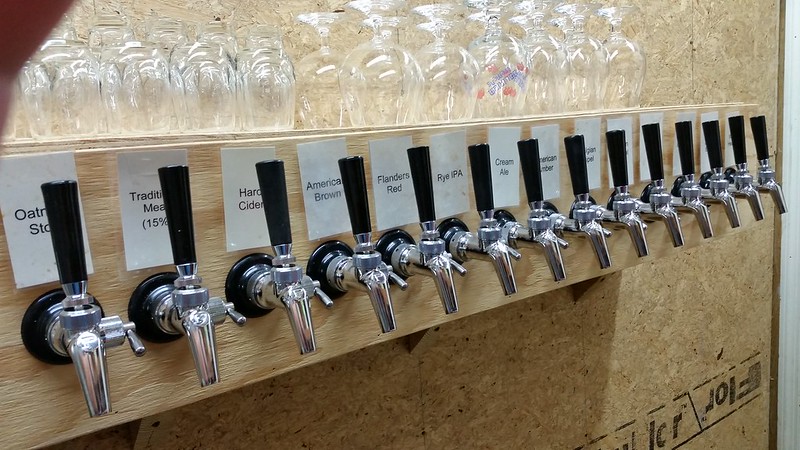
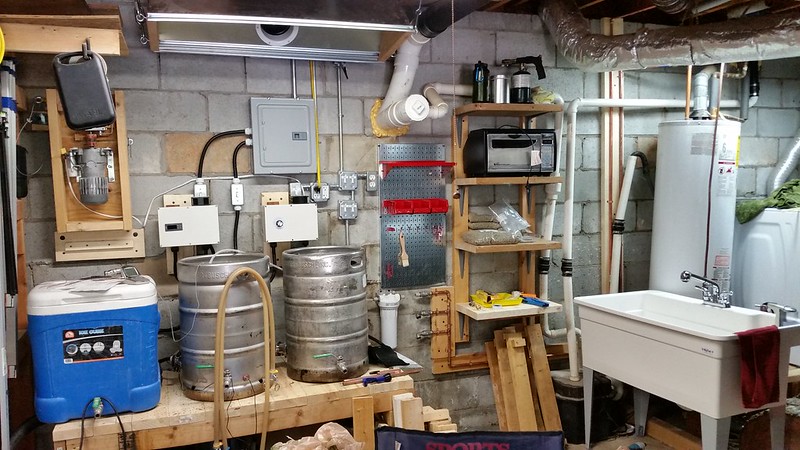
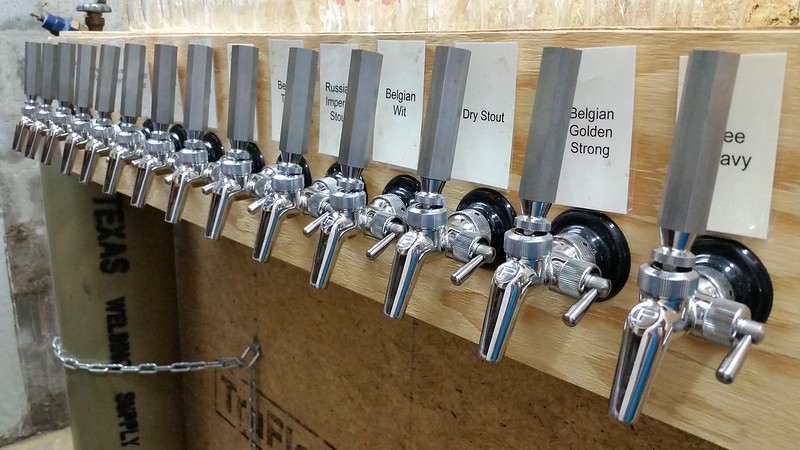
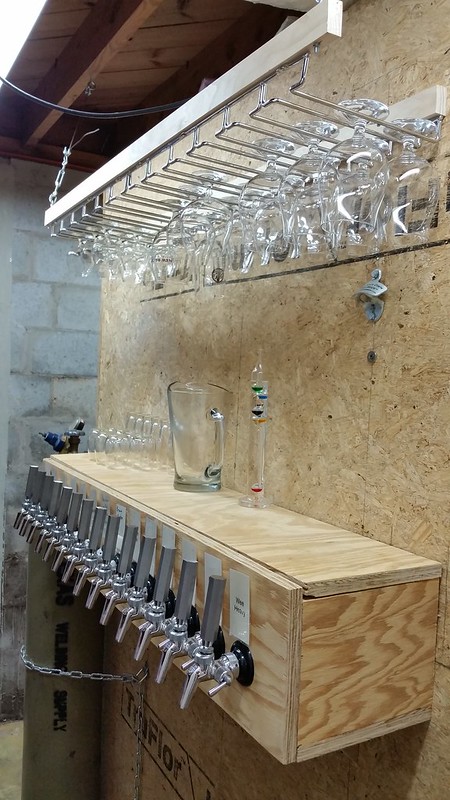
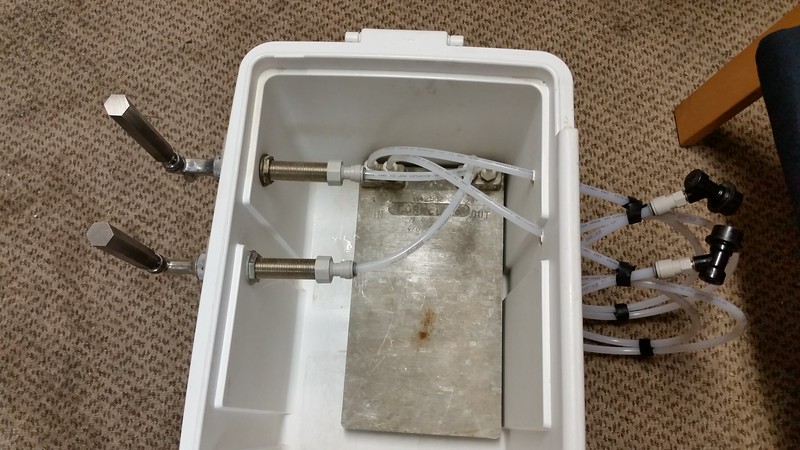
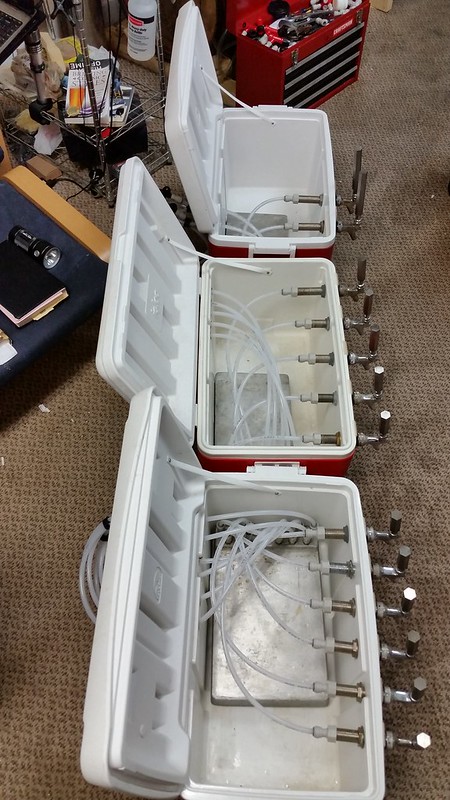

Wow. Total jealousy here. That looks great! It looks just like my setup. OK, albeit mine's on a much smaller scale.
I agree with you 100% on the tubing. I got the whole deal from Birdman Brewing - shanks, perlicks, and tubing. And you GOTTA go with the John Guest fittings with this stuff.
Congrats on the build. When can I come over to partake?
This is pretty amazing. Congrats on an awesome build. :rockin:
Now I really want to go look at buying a house again so I can make my own beer space. It's hard only having fridge space for 2 kegs at a time.
I may have to come see this for myself - I'm in Canton.
I'm using Bev-Seal 235 3/16" line for my setup myself.
If I read correctly, JG part # PI4512F4S is the correct connector for beer nut/tailpiece replacement for this line. Am I correct in this? Sometimes I feel like I've been beating my head against a wall trying to make sure all my connectors are sized properly.
Also, I noticed you have JG fittings on your pin lock connectors to the bev-seal line. Where did you run across those? I thought at 1/4", I may be able to find some of those at the local HD. I'm using ball lock, but I wouldn't think the threads are any different, assuming they're both MFL.
IIf you ever come by Tucker, let me know!



